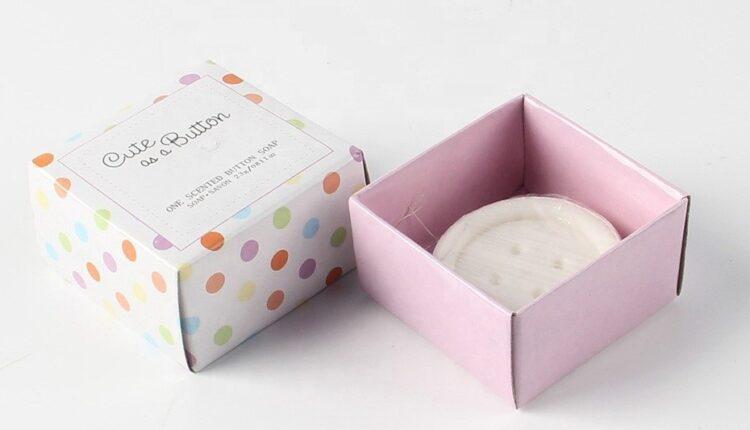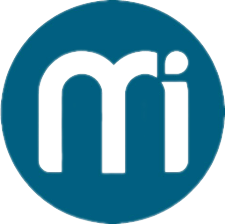Choosing the Right Bulk Soap Box Material

When it comes to packaging soap products, the choice of materials for bulk soap boxes is a critical factor that impacts both the sustainability and effectiveness of your product. With increasing consumer demand for eco-friendly options, brands must choose the right materials that not only preserve the integrity of their soaps but also align with environmental goals. In this guide, we will explore various materials available for soap boxes bulk, highlighting their benefits, drawbacks, and how they influence both the packaging process and customer satisfaction.
Understanding the Importance of Soap Packaging
Soap packaging is not just a matter of enclosing a product; it plays an integral role in protecting the soap from contamination, moisture, and damage during transit. Proper packaging can ensure that soaps retain their fragrance, texture, and appearance until they reach the customer. Beyond functionality, packaging also serves as a powerful marketing tool that communicates the brand’s values, aesthetics, and quality.
When selecting soap boxes in bulk, businesses must balance multiple factors such as cost, sustainability, and durability. The right material can enhance brand reputation and appeal to environmentally conscious consumers, whereas the wrong choice may lead to increased costs, product damage, or negative brand perception.
Types of Materials for Soap Boxes
Choosing the right material for bulk soap boxes starts with understanding the available options. Several materials offer different levels of protection, visual appeal, and eco-friendliness. Each material has its pros and cons, so it’s important to weigh these factors before making a decision.
1. Kraft Paperboard
Kraft paperboard is a popular choice for soap boxes due to its durability and eco-friendly nature. Made from recycled paper, it provides excellent protection against damage while being biodegradable. Kraft packaging is a top choice for brands that aim to offer sustainable solutions without compromising on quality.
2. Corrugated Cardboard
This material is made up of a fluted layer of paper sandwiched between two smooth layers, making it more robust than standard paperboard. It is particularly useful for shipping bulk soap products as it can withstand impacts and pressure during transit. Although slightly heavier than other materials, corrugated cardboard offers superior protection for delicate soap products.
3. Rigid Paperboard
Rigid paperboard offers a premium packaging solution that is often used for high-end soap products. This material is thicker and sturdier than regular paperboard, making it ideal for products that need extra protection. It’s also more aesthetically appealing, providing a luxurious feel that can elevate the perceived value of the soap.
4. Biodegradable Plastics
While not as eco-friendly as paper options, biodegradable plastics offer another alternative for soap packaging. These materials break down faster than traditional plastics, reducing their environmental impact. Brands can opt for biodegradable plastic for bulk soap boxes when they need the moisture resistance provided by plastic but also want to stay true to eco-conscious practices.
Factors to Consider When Choosing Soap Box Material
Before you settle on a material for bulk soap boxes, it’s important to assess several factors that will impact the overall effectiveness of your packaging. These include:
1. Protection Needs
Different soap products require different levels of protection. For instance, soaps that are more fragile or have intricate designs may need the extra cushioning provided by materials like corrugated cardboard or rigid paperboard. Meanwhile, solid bars of soap may only need basic protection that can be offered by paperboard.
2. Sustainability Goals
As consumers become increasingly aware of environmental issues, packaging materials that are sustainable, recyclable, or biodegradable are becoming a top priority. For eco-conscious brands, it’s essential to select packaging that not only protects the product but also minimizes waste. Kraft paperboard, for example, is biodegradable and made from recycled materials, making it a sustainable choice.
3. Brand Image
The material you choose can also influence your brand’s image. A premium soap brand may prefer luxurious packaging materials like rigid paperboard to communicate high-end quality. Meanwhile, brands with a focus on sustainability may choose recycled paperboard or biodegradable plastics to demonstrate their commitment to the environment.
4. Cost Efficiency
Cost plays a significant role in choosing the right soap packaging material. While sustainable materials like biodegradable plastics may be slightly more expensive, paperboard options can often provide a more cost-effective solution without compromising quality. Bulk purchasing can also help in reducing the overall cost of materials.
Eco-Friendly Soap Box Materials
Sustainability is a key concern for consumers today, and choosing eco-friendly materials for bulk soap boxes can significantly enhance your brand’s reputation. In an age where many consumers are looking for environmentally responsible products, opting for biodegradable and recyclable materials is an effective strategy.
1. Recycled Paperboard
Recycled paperboard is one of the most common eco-friendly materials used in soap packaging. It’s made from post-consumer waste, which helps to reduce the need for virgin resources. Recycled paperboard is highly customizable and can be printed with soy-based inks, further reducing its environmental impact.
2. Plant-Based Plastics
Plant-based plastics, often made from renewable sources such as corn starch, are a promising alternative to petroleum-based plastics. These materials break down more easily than traditional plastics, making them a good choice for brands aiming to reduce their ecological footprint. However, it’s essential to verify the certification of such materials to ensure their biodegradability.
3. Molded Pulp
Molded pulp is a highly sustainable material that is made from recycled paper and plant fibers. It’s biodegradable, compostable, and provides excellent protection for soap products. Molded pulp can be shaped into custom forms to fit different types of soap, and it’s a popular choice for eco-conscious brands.
Durability of Soap Box Materials
The durability of soap box materials is crucial in ensuring that the product reaches the customer in perfect condition. A durable material protects the soap from external factors such as moisture, dust, and impact. Choosing the right level of durability depends on the soap's composition and the mode of transportation.
1. Moisture Resistance
Soap is often exposed to moisture, especially when shipped in humid conditions. Some packaging materials, like Kraft paperboard and corrugated cardboard, may not offer strong moisture resistance unless they are coated or treated with a protective layer. In such cases, biodegradable plastics or coated paperboard may provide the necessary protection.
2. Impact Resistance
When soap products are transported in bulk, there is always the risk of impact during shipping. To prevent damage, selecting materials like rigid paperboard or corrugated cardboard, which offer greater resistance to compression and impact, is ideal. These materials will ensure that the soaps remain intact even when subjected to external pressures.
3. Aesthetic Appeal
In addition to durability, the appearance of the packaging also plays an important role in consumer perception. Rigid paperboard and molded pulp provide a high-end, natural appearance that can enhance the product’s shelf appeal. For eco-conscious consumers, the choice of material also reflects the brand's commitment to sustainability.
Customization of Soap Boxes
Customization plays a crucial role in setting your soap products apart in a competitive market. Customizing the design, shape, and size of bulk soap boxes allows brands to align their packaging with their marketing strategy and customer preferences.
1. Printing Options
Most soap box materials can be printed with various designs, logos, and branding messages. Materials like Kraft paperboard and rigid paperboard can easily accommodate high-quality printing, allowing brands to incorporate attractive visuals or environmentally friendly messaging. For those who want a more natural aesthetic, minimalistic designs with eco-friendly inks can create a strong impact.
2. Shape and Size Flexibility
Many packaging materials, such as paperboard and molded pulp, can be molded into various shapes and sizes to accommodate different soap products. Whether you are packaging bars of soap, liquid soap bottles, or soap sets, customizing the size and shape of the box ensures that your soap fits perfectly and is secure during transportation.
3. Eco-Friendly Coatings
For brands focusing on eco-friendly materials, selecting coatings such as water-based varnishes or biodegradable lamination ensures that the packaging remains sustainable while maintaining its visual appeal. These coatings enhance durability without compromising on eco-conscious values.
Bulk Soap Box Material Costs
When buying soap boxes in bulk, the material choice directly affects the overall cost of the packaging. Different materials come with varying price tags, and it’s important to balance cost against functionality, aesthetics, and environmental impact.
1. Material Costs
For example, Kraft paperboard is one of the most affordable materials for bulk soap boxes. On the other hand, rigid paperboard and biodegradable plastics may be more expensive due to their high-end feel or eco-friendly properties. Molded pulp is also a cost-effective solution, but its manufacturing process may add to the price.
2. Shipping Costs
Heavier materials, such as corrugated cardboard, may increase shipping costs due to their weight. Lightweight materials like Kraft paperboard can reduce shipping expenses, making them a cost-effective option for businesses with a tight budget.
3. Bulk Purchase Discounts
When buying in bulk, many manufacturers offer discounts, which can significantly lower the cost per unit. It’s important to compare pricing from different suppliers and ensure that you are getting the best deal without compromising on the quality or sustainability of the packaging.
Conclusion
Choosing the right material for bulk soap boxes requires a careful evaluation of the product's needs, brand identity, and sustainability goals. Each material comes with its unique set of advantages, and the right choice will depend on the level of protection required, the environmental impact, and the brand's image. Whether you opt for eco-friendly materials like Kraft paperboard or more robust options like rigid paperboard or biodegradable plastics, selecting the right packaging is crucial in maintaining soap quality, protecting the product, and appealing to environmentally conscious consumers.
- Art
- Causes
- Crafts
- Dance
- Drinks
- Film
- Fitness
- Food
- Games
- Gardening
- Health
- Home
- Literature
- Music
- Networking
- Other
- Party
- Religion
- Shopping
- Sports
- Theater
- Wellness


